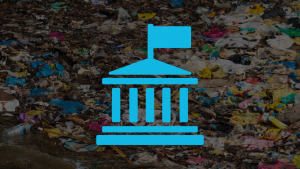- Recycling
- Standards and Certification
- Public Consultation
- Take Action
- National
Scientist YouTuber Goes 24 Hours Without Touching Plastic — Well, He Tries To
Usually when someone says they are going plastic-free or zero waste, it simply means they are working to reduce their consumption of single-use plastic as much as they practically can. But when scientist and YouTuber Kurtis Baute tries something new, he goes all in.
Full Article
Usually when someone says they are going plastic-free or zero waste, it simply means they are working to reduce their consumption of single-use plastic as much as they practically can. But when scientist and YouTuber Kurtis Baute tries something new, he goes all in. Baute recently vlogged himself attempting not to touch any plastic for 24 hours — and the results of his experiment shed a light on the importance of not letting the fact that you can’t do everything hold you back from doing something.
A few months ago, Baute went viral for locking himself in an airtight plastic dome filled with plants, in an experiment to see if the plants could convert carbon dioxide into enough oxygen for his survival, as reported by the BBC. This time around, Baute simply locked himself in his own home (because, as he says in the video, the pavement used for the sidewalks and streets in Vancouver are partly made with recycled plastic). That fact exemplifies just how seriously Baute took the experiment.
Baute opted not to wear his glasses for the 24-hour plastic-free experiment, because of his spectacles’ small plastic nose pads. He didn’t use his cell phone, because it contains plastic. He didn’t own any socks or underwear that didn’t contain some form of plastic (yep, fibers like polyester and nylon count), so he sported a very trendy towel around his waist and washcloths fastened to his feet. His carpet was also made of man-made fibers, so he played his own game of “the floor is lava” and scattered 100 percent cotton washcloths all over his home to step on. He pretty much only consumed shelf stable foods (plus some very creative cold-brew coffee) for the 24-hour duration of the experiment, because his refrigerator, kettle, stove, oven, and microwave all have plastic parts. He didn’t turn on or off any lights in his home, since the light switches are made of — you guessed it — plastic.
OK, you probably get the idea by now. So many more things are made of plastic than people realize, and it’s virtually impossible to avoid it all — but that doesn’t mean we should do nothing about the plastic crisis. Baute’s central message is that so many of us have the power to reduce our consumption of — and therefore, the demand for — single-use plastics, and that even implementing a few small changes can make a difference.
Green Matters spoke with Baute via email to learn more about what his takeaways from this experiment. He tells Green Matters that doing this made him realize “just how ludicrous single use plastics are. Plastic is an incredible technology, and we need to stop treating it like trash.” He adds he wants to share his insights regarding single-use plastic’s environmental impact on the earth with its inhabitants — and his video definitely accomplishes that.
“I hope that viewers realize just how much plastic we are surrounded in,” Baute tells Green Matters. “The number one take away from this is that we need to stop single use plastics such as plastic water bottles, packaging, and cutlery — they are destroying the environment, and finding their way into our bodies to do who knows what harm.”
At the end of his video, Baute suggests viewers do two things. Firstly, he recommends people take a “long, hard look” at the plastic waste in their trash and recycling bins, and to find alternatives to single-use plastic. For example, shopping at the bulk section in the grocery store and investing in reusable everyday items like a tote bag, water bottle, and set of utensils can go a long way. Secondly, Baute advises people to urge their local governments to ban things like plastic grocery bags, takeout containers, and more.
So, why exactly is it important to reduce our plastic consumption? Humans’ plastic use has astronomically increased in recent years. According to National Geographic, 40 percent of plastic created is for single-use packaging, and 44 percent of all plastic ever produced was made in the year 2000 or later. Worldwide, 4 trillion plastic bags and 500 billion disposable coffee cups are used every year, according to Earth Day Network. When items like these are used, they often become litter that winds up in oceans — to be specific, 8 million pieces of plastic go into oceans every day, polluting the water, killing wildlife, and more, according to Surfers Against Sewage. The alternative is that single-use plastic goes to the landfill, where it will emit toxic greenhouse gases, among plenty of other negative environmental effects.
Even though Baute proved that it’s virtually impossible to completely avoid plastic, he makes a great point that it is very possible to reduce your plastic use. His video serves as an important reminder that every person has the power to make a difference when it comes to fighting climate change.



